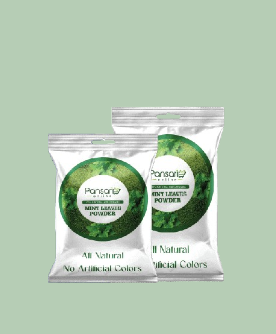
Packaging Fresh Herbs is crucial for preserving their freshness, enhancing shelf life, and appealing to consumers. Proper packaging not only protects the herbs but also communicates quality and brand identity.
Importance of Packaging Fresh Herbs
- Preservation of Freshness: Effective packaging minimizes exposure to air and moisture, helping to maintain the herbs’ freshness and flavor for a longer period.
- Extended Shelf Life: Packaging can significantly prolong the shelf life of fresh herbs by reducing spoilage and maintaining optimal conditions.
- Food Safety: Proper packaging protects herbs from contaminants and pests, ensuring they remain safe for consumption.
- Branding and Marketing: Attractive packaging can enhance brand recognition and consumer appeal. Creative designs can attract attention and communicate product quality.
- Convenience: User-friendly packaging allows for easy handling and storage, making it more appealing to consumers who prioritize convenience.
Materials and Designs for Herb Packaging
- Plastic Bags: Flexible plastic bags are commonly used for packaging fresh herbs. They are lightweight, provide a good moisture barrier, and can be sealed to preserve freshness.
- Clamshell Containers: Rigid plastic clamshells offer protection and visibility for herbs. They are stackable and can include ventilation holes to maintain airflow, preventing condensation.
- Paper Bags: Eco-friendly paper bags can be an attractive option for fresh herbs, particularly for organic brands. They allow for breathability while offering a rustic appearance.
- Glass Jars: For premium herb products, glass jars can provide an upscale look and are effective at protecting herbs from moisture and air.
- Biodegradable or Compostable Packaging: As sustainability becomes increasingly important, biodegradable materials can appeal to environmentally conscious consumers. Options include compostable bags or plant-based plastics.
- Labels and Branding: High-quality labels with clear product information, branding, and usage suggestions can enhance the overall appeal. Consider using vibrant colors and images that represent freshness.
Best Practices for Packaging Fresh Herbs
- Temperature Control: Fresh herbs should be packaged and stored at appropriate temperatures to maintain freshness. Consider using refrigerated packaging solutions if needed.
- Moisture Management: Use materials that allow for moisture control. Packaging should prevent excess moisture while retaining enough humidity to keep herbs fresh.
- Ventilation: Including small perforations or ventilation holes in packaging can help regulate air circulation, preventing condensation and reducing the risk of mold.
- Sealing Techniques: Use heat sealing or resealable closures to maintain freshness and prevent exposure to air. Resealable bags provide convenience for consumers.
- Portion Control: Offer herbs in various portion sizes to cater to different consumer needs, from single-use packets to bulk packaging for restaurants.
Sustainability Considerations
- Eco-Friendly Materials: As consumers become more eco-conscious, using recyclable, biodegradable, or compostable materials can enhance brand reputation and attract environmentally aware customers.
- Minimal Packaging: Reducing excess packaging can appeal to consumers looking for sustainable options. Focus on efficient designs that use fewer materials while still protecting the product.
- Educational Labels: Include information on the packaging about the sustainability of the materials used, encouraging consumers to recycle or compost the packaging after use.
- Local Sourcing: Consider sourcing packaging materials locally to reduce the carbon footprint associated with transportation. This approach can also resonate with consumers who prioritize supporting local businesses.
Marketing Strategies for Fresh Herb Packaging
- Highlight Freshness: Use packaging design elements that convey freshness, such as vibrant colors and images of fresh herbs. Highlight the product’s quality on the packaging.
- Recipe Ideas: Include recipe suggestions or usage tips on the packaging to inspire consumers to use the herbs creatively. This can enhance customer engagement and promote product use.
- Social Media Integration: Encourage customers to share their culinary creations using your herbs on social media. Create a branded hashtag and feature user-generated content to build a community.
- Promotional Offers: Utilize packaging as a platform for promotions, such as discounts for repeat purchases or bundled offers with complementary products.
- In-store Displays: Design eye-catching in-store displays that highlight your herb packaging. Use signage to educate consumers about the benefits of your products and the importance of fresh herbs.
Conclusion
Effective packaging for fresh herbs plays a crucial role in preserving quality, enhancing shelf life, and appealing to consumers. By choosing the right materials, following best practices, prioritizing sustainability, and implementing effective marketing strategies, brands can successfully engage consumers and stand out in a competitive market. As consumer preferences evolve, the importance of innovative and sustainable packaging solutions will continue to grow.
Advanced Insights into Packaging Fresh Herbs
Packaging fresh herbs involves understanding not just the technical aspects but also market dynamics, consumer preferences, and potential challenges. This comprehensive overview will cover the latest trends, distribution strategies, and address common issues faced in the packaging process.
Industry Trends in Fresh Herb Packaging
- Plant-Based Packaging: The shift toward plant-based packaging is gaining traction. Materials derived from renewable resources, such as cornstarch or sugarcane, are being explored as alternatives to traditional plastics. These materials can enhance sustainability while maintaining functionality.
- Smart Packaging Technologies: Advances in technology are enabling the development of smart packaging solutions that can monitor freshness. Incorporating sensors that track temperature or humidity can provide consumers with real-time information about the product’s condition.
- Direct-to-Consumer (DTC) Sales: The rise of DTC sales channels has influenced packaging designs. Brands selling directly to consumers often opt for unique, unboxing experiences that enhance customer satisfaction. Custom packaging can play a key role in differentiating products.
- Sustainable Farming Practices: As consumers become more aware of sourcing and farming practices, brands that package herbs can emphasize their commitment to sustainability. Packaging can include information about organic farming methods, pesticide-free practices, and local sourcing.
- Seasonal and Limited-Edition Packaging: Seasonal packaging can create excitement and urgency among consumers. Limited-edition designs that align with holidays or special events can drive sales and encourage impulse buying.
Consumer Preferences and Behavior
- Transparency in Sourcing: Consumers increasingly seek transparency regarding where their food comes from. Packaging can include QR codes linking to information about the farm, growing practices, and even the journey from farm to table.
- Convenience and Portability: Modern consumers prioritize convenience. Packaging that allows for easy transport, resealing, and portion control can enhance the overall user experience. Single-use portions for on-the-go meals are particularly appealing.
- Aesthetic Appeal: Visual appeal plays a significant role in purchasing decisions. Packaging that is vibrant, attractive, and showcases the freshness of the herbs can entice consumers. Clear windows or transparent materials allow customers to see the product inside.
- Health Consciousness: As health trends continue to rise, consumers are more inclined to purchase fresh herbs that are perceived as healthy and natural. Packaging can highlight the health benefits of herbs, such as nutritional information or culinary uses.
Distribution Considerations
- Cold Chain Logistics: For fresh herbs, maintaining the cold chain during distribution is crucial. Packaging should be designed to retain temperature during transport, ensuring that herbs arrive at retail locations or consumers’ homes in optimal condition.
- Retail Shelf Life: Packaging must consider the shelf life of fresh herbs in retail settings. Ensuring adequate ventilation and moisture control in the packaging helps minimize spoilage and waste.
- E-commerce Packaging Solutions: With the growth of online shopping, packaging for fresh herbs needs to address the challenges of shipping. Packaging should be robust enough to withstand transit while still presenting the product attractively upon delivery.
- Bulk vs. Retail Packaging: Brands must decide whether to package herbs for bulk sales (e.g., to restaurants) or in retail-ready packages for consumers. Each option presents unique challenges and requires different packaging strategies.
Challenges in Fresh Herb Packaging
- Spoilage and Waste: Fresh herbs are prone to spoilage due to moisture and temperature fluctuations. Packaging must effectively manage these factors to minimize waste and maintain product quality.
- Consumer Education: Some consumers may not be aware of how to store fresh herbs properly. Packaging can address this by including care instructions, storage tips, and expiration dates.
- Regulatory Compliance: Depending on the region, there may be specific regulations governing food packaging. Brands must ensure that their packaging complies with labeling requirements and food safety standards.
- Cost Considerations: Sustainable and innovative packaging solutions can sometimes be more expensive. Brands must balance quality, sustainability, and cost-effectiveness to maintain profitability.
Conclusion
Packaging fresh herbs is a complex but rewarding process that involves understanding market trends, consumer preferences, and distribution challenges. By focusing on sustainable materials, innovative designs, and consumer education, brands can effectively engage their target audience while preserving the quality of their products. Our team collaborated with a Vancouver Packaging firm to develop sustainable and visually appealing solutions for our new product line. As the demand for fresh, flavorful herbs continues to grow, packaging will play a crucial role in enhancing consumer experiences and driving sales.



